Valley Fish & Cheese – Transcript
– This week on Wisconsin Foodie:
[gentle guitar music]
– My grandfather loved to duck hunt, so he built two dozen of his own decoys. When I was growing up, when I was seven, eight years old, I was carving decoys and painting ’em, and so I have carved literally thousands and thousands of ’em.
[banging on boat]
– This is a technique that was actually developed by the Native Americans. Look at the size of ’em! This is a river buffalo.
We hear on a daily basis that we have the best smoked fish in the world. I’ve always said that here at Valley Fish and Cheese, we sell things you can’t find at Walmart. Alligator jerky, catfish jerky, snappin’ turtle jerky, perch jerky, we try to do good quality, oddball stuff that is, you know, unique.
– Wisconsin Foodie would like to thank the following underwriters for their support:
The Dairy Farmers of Wisconsin are proud to underwrite Wisconsin Foodie and remind you that in Wisconsin, we dream in cheese.
[crowd cheering]
Just look for our badge. It’s on everything we make.
Employee-owned New Glarus Brewing Company has been brewing and bottling beer for their friends, only in Wisconsin, since 1993. Just a short drive from Madison, come visit Swissconsin, and see where your beer is made.
Milwaukee’s landmark art deco hotel offers luxury accommodations, legendary hospitality, and world-class dining. Paired with the hotels roaring ’20s vibe makes The Ambassador a must-experience destination.
From production to processing, right down to our plates, there are over 15,000 employers in Wisconsin with career opportunities to fulfill your dreams and feed the world. Hungry for more? Shape your career with these companies… and others at FabWisconsin.com. Society Insurance. Small details. Big difference.
Edible Milwaukee magazine.
Also with support of the Friends of Wisconsin Public Television.
[light jazz music]
[car humming]
[chickens cackling]
[liquid splashing]
[vegetables crunching]
[fruit popping]
[meat sizzling]
[jazz music]
[lively jazz music]
– My grandfather loved to duck hunt, and he was very good friends with a couple of guys in town who were master decoy carvers. So, he built two dozen of his own decoys. And then my grandmother painted ’em, and she was a phenomenal artist. And then in the ’50s, my father started carving decoys. And when I was growing up, when I was seven, eight years old, I was carving decoys and painting ’em. And so I have carved literally thousands and thousands of ’em. It’s been, I mean, we’re known nationally. I mean, pretty much anybody that’s in the decoy world or the art world pretty much knows our name. Everything I do is with a draw knife. This is, I’ve literally carved thousands of decoys with this draw knife. And this is white pine. What you do, you just take and you can see the shavings coming off.
It’s all in how you, you’re just taking little bites,
and getting the correct grain.
The older I get, I find myself locking my shop door. I carve what I want to carve. I do take a few orders. Got some customers that have been with me for so many years, that if they want something unique, I end up doing it for them. This here guy’s going to be flying like this here. He’s going to have big feet coming out, and I’m going to put a mouse, a dead mouse in his foot, so. He’s going to be kind of cool. If I get bored of making a decoy, I’ll go to fish. If I get fish, I’ll carve a Santa Claus, or paint a sign or paint a picture, or something. This is a Santa Claus flying on a Canadian Goose. Though, the beautiful thing about it is you can put Santa Claus flying on anything. And it works. People,
[laughs]
people will buy it. It’s a lot of work, but it’s kind of fun. Something different from the ordinary decoy. Takes your mind off fish.
[gentle guitar music]
[boat motor humming]
I was born and raised on the river, so it’s pretty much a way of my life, daily.
This year’s been an exceptional hard year for us, though, with the high water. It’s been really, really tough on us tryin’ to catch fish. Our coolers are completely depleted right now, so we need to, we need to get ’em restocked.
We’re headed over to Sunfish, which is on the Upper Mississippi River here. We’re in the West Channel. And we’re going to lay a drive net out, and go up above and scare the fish down into the net.
Hopefully, we’ll get some. We’re after carp, buffalo, and some sheepshead.
So, it’s a beautiful day, I know that.
My father taught me, and my grandfather. It’s a family tradition here out of Prairie du Chien, so I feel pretty privileged. I’m 57, and I had my own boat, and that’s when I was 12. So, a long time.
We’re running the net out, drive net. This is about six feet deep, made out of monofilament 139 fishing line, and it’s about 500 feet long. Well, maybe 600 feet long. And it sinks to the bottom, and then these corks float up that high. So, it’s laying on the bottom, ’cause 99 percent of the fish are on the bottom. Brian, those are your tools.
Okay, what we’re going to do now, we got the net set across there, and we’re going to go up and try to scare the fish down into the net. See what’s layin’ here.
[gentle guitar music]
There’s a fish up there. Brian, you’re just going to beat on the side of the boat or on the deck or wherever, just make noise.
[banging on boat]
This is a technique that was actually developed by the Native Americans, and they would actually take– in small rivers is where it’d probably originated– And they would take willows and sticks and make a solid wood fence at an angle and a funnel, and put their net right in the middle of it, and then get up and beat down with their canoes. They would take willow branches and beat on the, slap on the water. And that’s where it actually originated from. We always called it drive-netting, because in a sense you are driving the fish into the net.
Ah, they’re hittin’ the net good, boys. Stakes a-jumpin’.
[banging on boat]
Okay, one more plug for good luck, and pick her up.
There you go.
Put that back there in the side.
There’s a couple fish in her. It ain’t loaded, but we got, we didn’t get skunked.
Oh! Look at the size of ’em! This is crazy. This is a river buffalo. That’s about a five, six pounder. And this is a native fish to the river here.
Oh, my back!
It’s a lot of work, hard work, but it beats, for me it beats a factory job. I did try factory work. That didn’t work out for me at all, so.
[laughs]
There’s a nice buffalo. That’s what we’re after. Oh, my God, there go, one got away. Oh, my God, look at the fish. I can’t believe it! Oh, sheepshead, big sheepshead. Nice one, look at that.
– Brian: Yeah, that’s a good one.
– This is a sheepshead.
Or a freshwater drum. This is about a five-pound fish. We like ’em five to eight pounds is a perfect size for smoking. They do get– We’ve had ’em 30, 35 pounds.
That was a good haul!
[gentle guitar music]
Very good. In the late ’60s, mid ’60s, ’70s, up until about late ’70s, early ’80s, there was as many as 125 full-time, part-time commercial fishermen in the area. Now there’s five. We most definitely are a dying breed, and it’s um– It’s, that’s heart-wrenching. There’s really not much interest in the younger generation bringing it forward. In 10 years, I would say my end of the deal is going to be over, so.
It’s, uh, yeah, it’s definitely a dying trade.
[gentle guitar music]
[banging on boat]
My God, this is our last haul, so. Oh, man!
[chuckles]
Well, we got enough to smoke, boys, that’s all that counts.
We didn’t get 600, but we got 400.
I’m a huge conservationist. I don’t take any more than I would, I think I’m going to need or use. I would just like to see people think of what you could do to maintain our environment. I mean, we caught four or 500 pounds, that’s all I needed. Now, I could’ve stayed out and caught 1500, 2000 had I pushed it till dark; I don’t need that. My sustainability is perfectly fine for this week. I’m good now. And, when you’re in a wholesale market, you’ve kind of got a different mindset of view. You’re getting paid by the pound, so you want to catch as many pounds as you can. Where I’m totally opposite.
Okay!
Take it out!
Now we’re going home, and we’re going to unhook the boat, and we’re going to start cleaning fish. And we’re going to get ’em ready for the brine, get ’em in the brine tonight. First thing we’re going to do is have a cold beer, though.
[laughs]
Okay.
Oh, you got it, Brian?
– Brian: Yep, I got it.
– All right, make sure you take your Geritol tomorrow morning now.
– No kidding.
– All right, thank you.
These are the perch.
Or the sheepshead, drum, whatever you want to call ’em.
We call ’em boneless, skinless perch fillets, that’s how we sell ’em out of the store, so that’s what we’ll call ’em today. This fish, the sheepshead, drum, freshwater drum, is the most underestimated fish in the entire river. Very, very few people think you can eat it; they throw it away. “Ah, it’s no good, you can’t eat it.” It’s our number one seller. It’s just, but it’s got to be cleaned correctly. Our fish is caught, cleaned, processed, smoked, all within 24 hours. I mean, nothing lays around.
So, we got three different qualities of meat in the same, in the same type of fish right here. This fish right here, you can see how white it is? Almost a pearlescence, beautiful white? That’ll go in for frying or baking. So that’ll be sold fresh. This fish here is what will be, is a smoker. The whole thing will go in for a smoker. This, you can see how yellow it is? So that will go in for perch jerky. You don’t notice the color at all because it’s marinated. Most people think that smoked fish is just brown sugar and salt. Well, you can get by with that. But we don’t.
[chuckles]
We use oregano, we use a little garlic, a little paprika, Cajun sauce, a little onion.
Like, 20-some different kinds of spices. Put a little seasoned salt here.
I don’t write stuff, I just know in my head. I’ve done it hundreds of thousands of times, so I just throw a little of this, a little of that.
[water running]
And then we have a salinity tester, a brine tester. Salinity is huge when you’re smoking any fish. That’s your number one thing. So you take a one-inch PVC piece of tube and dump that in there…
’til it’s full. You stick your salometer in there,
floats up, now see, that’s way too much. I’m at 25. So it’s, these fish would be way too salty. So I add some water. This is basically your first,
your first step in getting your fish prepared. So we’ve got our, we’ve got our fish here that are filleted, washed, now they’re ready to be trimmed. So, this fish here, we’re going to take this and cut it in half right there. Trim that fat off the back. Trim all this red. One thing about sheepshead that gives the sheepshead, or the freshwater drum, a bad name is, people go, “Oh, you can’t eat that, it’s horrible.” Well, number one, if you leave all this fat and that silver skin and this red meat on it, you can’t eat it; it’s horrible. But you take this fish here. You take that, you take this, that fillet right there, and you trim all that red meat off in there, all that fat off in there, and it’s absolutely to die for. That’s what you want to end up with. You can have a little bit of red, I mean, you don’t have to be surgically precise. But that fish right there is perfect. So, put that in there.
Sheepshead has got to be cleaned, caught, cleaned, processed within two, three hours. And we’re just gettin’ done, been a long day. So, tomorrow morning we’re going to get up about 5:30, and be out here at six to take ’em out of the brine, out of the walk-in cooler. We’re going to load the smoker. I’m tired.
[laughs]
I am, I am very tired.
[moans]
[chewing]
Wednesdays are kind of a busy day for us, ’cause we get our shipment of seafood in every Wednesday, so.
[door creaks and closes]
Well, we’re going to go out here right now and get the smoker. Get the fish out of the walk-in cooler.
And put ’em on the smoker. Got to clean the smoker first. We always clean it.
That’s our salmon, there. All right. Here’s our perch.
And here’s our buffaloes.
One thing we don’t do either, and a lot of people always ask, “Do you reuse the brine?” We don’t reuse it.
All righty.
Ah, it’s just a little after six right now, Wednesday morning. And we’re getting the smoker cleaned.
As clean as you possibly can because when the smoker heats up and gets hot the drippings become more liquified and will drip down on your product, and you do not want that.
[metal scrapping]
All right.
[grunting]
Ah, this is our Atlantic salmon.
We are going to put in here. We do…
religiously every week, we do fresh Atlantic salmon. These are two to three-pound fillets. And these are what’s called minimal-fed salmon. So, they’re farm-raised in the ocean. I do not buy inland-farmed salmon that are raised in a pond inland. These are just so much better. Okay, about done with that. And here’s our —
There’s our perch fillets. Those look nice. Tomorrow, we will do some more Atlantic salmon, some sturgeon and catfish.
So, different days of the week it’s different, different varieties and species. These are the buffalo fish that we caught last night in our drive net, and they’ve been brining now for about 12 hours. We always lay, you always lay your fish in the smoker skin-down, if they have skin on ’em. And lay them as tight as you possibly can
to conserve on space. Just so they aren’t touching, ’cause if they touch, they will stick together. It’s like putting together a puzzle.
That piece in there to utilize that space a little better, and put this piece over here. So, today we’re only about a half a smoker full. We’ll close her up here, get some kindling, get a fire started and get some smoke rolling.
You got to be careful how much wood you add. You don’t want it too hot. You got to kind of regulate temperature in your mind as to what it would be. All depends on how dry your wood is, how green your wood is. Okay, we got fire.
Smoking is probably, I would say, 2/3 of our business. We’re the only licensed smokehouse left in the State of Wisconsin that’s 100% wood. No gas, no liquid smoke, no wood chips. It’s 100% hickory. And it’s the only other means that I could stay in the commercial fishing business and make money at it and get rid of my fish.
Rather than be at the mercy of a wholesaler and buy your fish for nothing, you just have to take it one step further and clean the fish and smoke the fish, and it is a lot of extra work as you can see, but you can get rid of the product. That’s not a problem. We hear on a daily basis that we have the best smoked fish in the world. We hear it literally 10, 15 times a week.
This’ll do ‘er for you, then, guys?
– Customer: I think so.
– Mike: All righty.
– Customer: This is the best place to get smoked fish, I’ll tell you that.
– Well, thank you, we appreciate that. Sockeye. You’re going to like those perch. They were swimming yesterday.
– Thank you much!
– You betcha. See you later, guys. I’ve always said that here at Valley Fish and Cheese we sell things you can’t find at Walmart. That’s kind of —
[laughs]
We sell anything from coon skulls to smoked fish. I make all my own sausages, all my own jerkies, alligator jerky, catfish jerky, snappin’ turtle jerky, perch jerky, beef jerky, elk jerky, bison jerky. Out of all the jerkies we do, we sell the least of beef jerky. I’ve always said you’ll never walk into my store and leave and go, “Oh, my God, they had beef jerky!” But you will walk away and say, “Oh, my God, “alligator and snappin’ turtle jerky? “Man, that was cool!” I hate wasting anything. We started saving the skin off in the snapping turtles, and tanning it and selling it, and that sold. So then I thought, well, we’ll do the shells, and that sold, and then we do the heads, and that sold. So now we don’t throw nothing away. We try to do good quality, oddball stuff that is, you know, unique.
[lively guitar music]
Yep, they’re looking good.
We’re putting on a coat of glaze that we put on. Do it about two to three times. It’s, uh, two, two pounds of brown sugar, one gallon of ketchup, about 1/2, 3/4 container of maple syrup, pure maple syrup. So, that’s what we use for a glaze. The glaze gives it a nice look and it gives it a nice, sweet flavor to it.
When they’re nice and firm on the back side and they don’t squish, nice and hard, that’s, that’s done. Now, that one is perfect color. That’s the color you’re looking for. Just a beautiful deep, dark, golden brown, that’s what you’re looking at. This is what they’re supposed to look like. You know, nice, slow, smoldering smoke with some heat. Slowly building up the heat and process, so that’s, that’s what you’re trying to achieve. So, it’s, what is it, noon? So these have been in for six hours. Two more hours, eight hours. Eight to 10 hours on a thicker piece of fish is perfect. Six to eight, and you’re right, we’re right there. So, we’re good to go.
90% of our fish that we’re selling is river fish. They’re different thicknesses, they’re different cuts. You know, say if you did salmon, they’re all exactly three-pound fillets. Everything’s clone exact. But it’s not that way with river fish. I mean, we’re doin’ 40-pound fish and four-pound fish. So, different ones get different times, different intervals throughout the smoker. That’s why you got to babysit it continuously. The Atlantic salmon here are gettin’ very close to being done. That’s a perfect color that you’re lookin’ at. Desire that beautiful honey-golden colors, as far as color goes. But you can squeeze on the back side and see it’s a little soft back here in the thickest part of the fish. Doesn’t do any good if you got perfect color and the fish is raw in the middle, or you didn’t have the correct salinity, or it’s too salty, it’s all got to mesh. We’ll leave them in just a little bit longer.
These are our perch. That’s what you want ’em to look like, is about right, that is perfect.
Perch, these smaller fish, you’ve got to be extremely careful, ’cause they will turn in a matter of five minutes. They’ll go the other way. That’s a perfect color right there, that one is absolute perfect color.
[fiddle music]
Take these into the shop, and try a little sample of ’em there.
All right. Bring our perch in and get ’em into the case here. And let ’em, set ’em down and let ’em cool here a little bit before we put ’em in. I suppose we better try a piece to make sure they’re fit to eat.
[fiddle music]
Flavor is very similar to walleye on these.
Excellent eating fish.
[chewing]
Kind of similar to cod in a way. Very mild, no fishy taste. All right, we’re going to give our buffalo fish a little try here and see how she’s tastin’. You can see it’s real white, flaky.
Just about right, personally, myself, I like it a little more done, a little more on the done side.
[chuckles]
Eatin’ up all the profits. I love eatin’ ’em when they’re hot out of the smoker, that’s when I love to eat ’em. The taste is just so much better than buying smoked fish that’s done in 1,000-pound batches. The way it’s done, this way, the slow, drawn-out process. It’s a different kind of product. You’re going to pay a little more for it, but it’s just a way different product.
[lively music]
Pull it out, we got the plug out!
[laughs]
That’s good! Oh, oh! Yeah, that don’t work very well.
[laughs]
Oh! Forgot to put the plug in. I left it out ’cause I wanted that rotten cheese water out of here. Well, that’ll work out, that’ll give you time to take these two bags and take ’em over there and dump ’em, these leaves.
[laughter]
I knew there was a reason for it.
– Brian: That’s how we, oops!
[laughs]
Kind of jumpy!
[laughs]
– Wisconsin Foodie would like to thank the following underwriters for their support:
The Dairy Farmers of Wisconsin are proud to underwrite Wisconsin Foodie, and remind you that in Wisconsin we dream in cheese.
[crowd cheering]
Just look for our badge. It’s on everything we make.
Employee-owned New Glarus Brewing Company has been brewing and bottling beer for their friends, only in Wisconsin, since 1993. Just a short drive from Madison, come visit Swissconsin and see where your beer is made. Milwaukee’s landmark art deco hotel offers luxury accommodations, legendary hospitality, and world-class dining. Paired with the hotel’s roaring ’20s vibe makes The Ambassador a must-experience destination.
From production to processing right down to our plates, there are over 15,000 employers in Wisconsin with career opportunities to fulfill your dreams and feed the world. Hungry for more? Shape your career with these companies… and others at FabWisconsin.com. Society Insurance, Small details. Big difference. The Wisconsin Department of Natural Resources.
The Central Wisconsin Craft Collective.
Something Special from Wisconsin. Illing Company.
Edible Milwaukee magazine.
Also, with support of the Friends of Wisconsin Public Television.
For more information about upcoming Wisconsin Foodie special events, dinners and tours, please go to WisconsinFoodie.com. There you can sign up for our mailing list to be the first to know about our events and offerings. Also, get connected with us through Facebook, Instagram, and Twitter.
[light jazz music]
Search Episodes
Related Stories from PBS Wisconsin's Blog

Donate to sign up. Activate and sign in to Passport. It's that easy to help PBS Wisconsin serve your community through media that educates, inspires, and entertains.
Make your membership gift today
Only for new users: Activate Passport using your code or email address
Already a member?
Look up my account
Need some help? Go to FAQ or visit PBS Passport Help
Need help accessing PBS Wisconsin anywhere?

Online Access | Platform & Device Access | Cable or Satellite Access | Over-The-Air Access
Visit Access Guide
Need help accessing PBS Wisconsin anywhere?

Visit Our
Live TV Access Guide
Online AccessPlatform & Device Access
Cable or Satellite Access
Over-The-Air Access
Visit Access Guide
 Passport
Passport


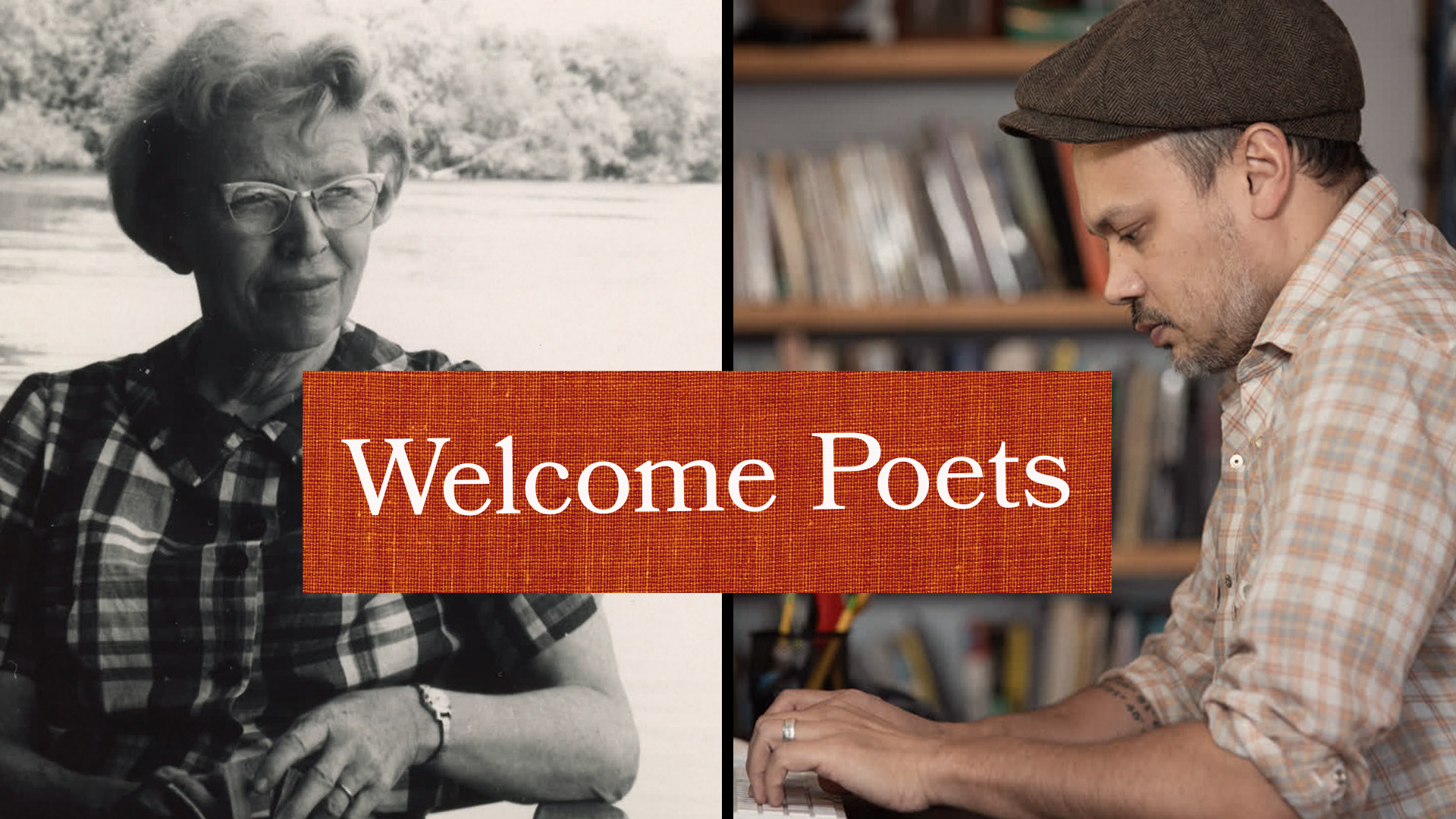



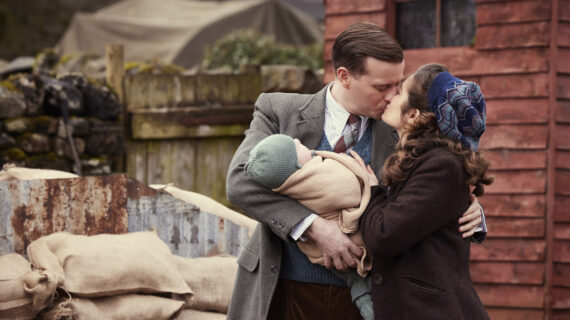

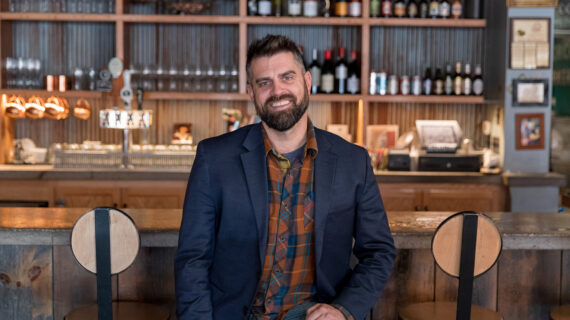
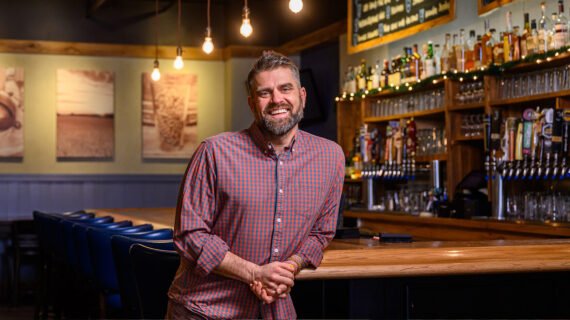
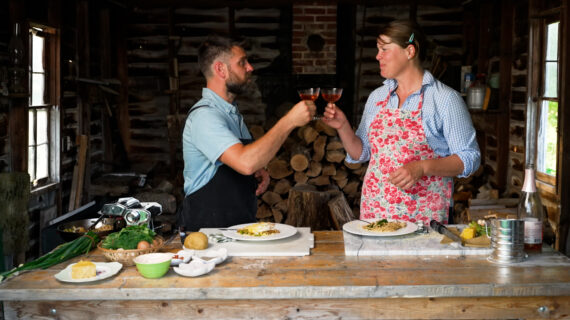
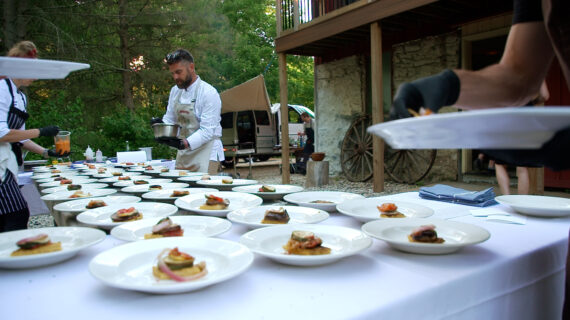
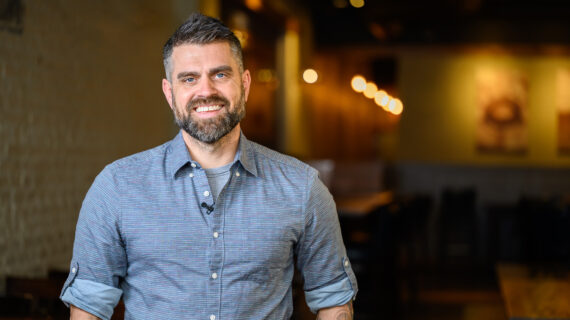
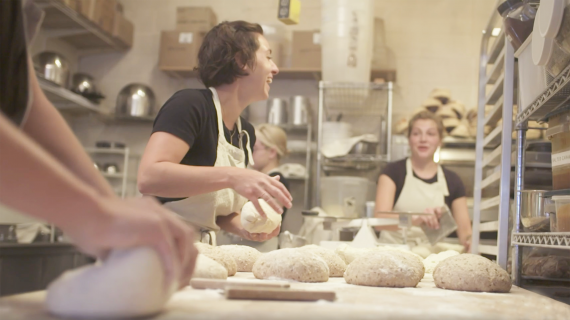


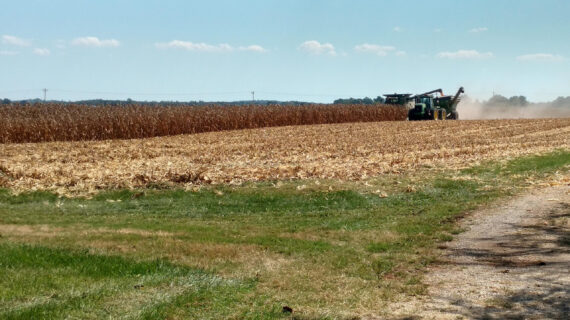

Follow Us